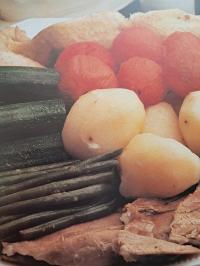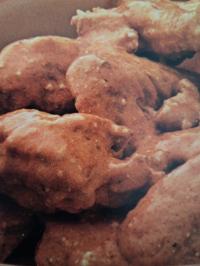Copy Link
Add to Bookmark
Report
Mead Lovers Digest #1069

Subject: Mead Lover's Digest #1069, 16 January 2004
From: mead-request@talisman.com
Mead Lover's Digest #1069 16 January 2004
Forum for Discussion of Mead Making and Consuming
Dick Dunn, Digest Janitor
Contents:
Re: Mead Lover's Digest #1068, 12 January 2004 (Jim Johnston)
Re: Topping up mead (Don Dibble)
Topping off mead (Phil)
Re: Winter Mead Gathering Saturday January 24th, Nashville TN ("Thirsty Vi...)
Two-stage brewing? (kypao@juno.com)
What to do?/Vinegar (Travis Dahl KE4VYZ)
Re: Mead Lover's Digest #1067, 5 January 2004 ("Dennis Key")
NOTE: Digest appears when there is enough material to send one.
Send ONLY articles for the digest to mead@talisman.com.
Use mead-request@talisman.com for [un]subscribe/admin requests.
Digest archives and FAQ are available at www.talisman.com/mead. There is
a searchable MLD archive at hubris.engin.umich.edu/Beer/Threads/Mead
----------------------------------------------------------------------
Subject: Re: Mead Lover's Digest #1068, 12 January 2004
From: Jim Johnston <jim@tervolk.com>
Date: Mon, 12 Jan 2004 13:54:12 -0600
> Does anyone know of any taste comparisons of kegging versus bottling
> mead?
> I think to be useful, such a test would have to last about 4 or 5
> years.
> Split a batch between bottles and a keg. Then taste at regular
> intervals.
>
> Also, for those who keg meads, do you typically store the kegs in a
> refrigerator? So far, I've bottled all of mine and stored them at room
> temperature (although I sometimes refrigerate before serving). I've
> never
> noticed any oxidation or other off flavors that I attribute to aging in
> bottles in my meads (my oldest was 7.5 years).
>
My experience in bottling vs. kegging is only in terms of still vs.
sparkling, I've never tried both methods for sparkling in one mead.
Since active yeast would be present in both, assuming they are
unfiltered, then the differences would have to do with the contact
surface area of the yeast, which would be greater in the bottled
version. As for long aging, I have never had a kegged mead lat very
long, I'm afraid...
As for still vs. sparkling, the sparkling version is drier due to the
influence of carbonic acid and the balance with the residual sugars in
the mead. My preference is to keg a semi-dry or even a sweet mead over
a fully dry one. This leaves a bit more residual sugar to offset the
increased acidity, and gives a better balance.
Jim
------------------------------
Subject: Re: Topping up mead
From: Don Dibble <dondibble@sbcglobal.net>
Date: Mon, 12 Jan 2004 12:29:33 -0800 (PST)
Hi all! I use CO2 to push the air out of my carboys before racking into
them. However, I've never heard of anyone testing this procedure to see
what pressure to use or for how long. Has anyone performed, or seen
results from, a test? I was thinking about testing via a long match. When
the match goes out their should be no more, or very little, Oxygen is
left. Opinions?
Thanks!
Don
Subject: Topping up mead
From: Leo Vitt <leo_vitt@yahoo.com>
Date: Tue, 6 Jan 2004 11:41:11 -0800 (PST)
<snip>
I rely on "CO2 is heavier than air", and assume the air is pushed out of
the carboy first.
<Snip>
------------------------------
Subject: Topping off mead
From: Phil <dogglebe@yahoo.com>
Date: Mon, 12 Jan 2004 14:27:56 -0800 (PST)
> There has been a little discussion about topping up
> mead in a carboy.
> I assume you mean for secondary (and later)
> fermenters. CO2 is another
> option for keeping the air out. If someone has a
> CO2 system for kegged
> homebrew, it is easy to put some CO2 into the
> carboy. Yes, I know that
> is not an option for everyone. I rely on "CO2 is
> heavier than air",
> and assume the air is pushed out of the carboy
> first.
Once, in a homebrew shop, I saw an aerosol can of some
gas (argon, maybe?) used to keep wine fresh. You give
a quick spray into an open bottle of wine to prevent
oxidation.
Another way is to buy a CO2 charger at a homebrewing
supply store. For twenty dollars, you get a handheld
CO2 dispenser that using 12 gram CO2 cartridges. All
you need is a short burst of Co2 to blanket the mead.
You don't have to fill the carboy with it.
Phil
------------------------------
Subject: Re: Winter Mead Gathering Saturday January 24th, Nashville TN
From: "Thirsty Viking" <john_doerter@hotmail.com>
Date: Tue, 13 Jan 2004 20:50:44 -0600
Vicky Rowe can't make it right away so we'll have another one when she can.
Currently we have firm commitments from 3 meadmakers each bringing 2+
varieties, and probable commitments from 4 others.
Send me email for more details if you want to participate in this gathering
with a mead or non grape wine of your own.
jdoerter at comcast net
------------------------------
Subject: Two-stage brewing?
From: kypao@juno.com
Date: Wed, 14 Jan 2004 11:11:27 GMT
I am about to start my first batch of mead. I was doing some searching
and found this article in the Bee's Lee's:
Blueberry-Jasmine Mead
Source: Alan Derr (aderr@BBN.COM)
Mead Lover's Digest #122, 1 May 1993
Ingredients:
10 lb clover honey (basic, grocery store variety)
2-12oz bags of frozen Maine wild blueberries
1/4 c jasmine tea (dry)
3 tsp. pectic enzyme
3 tsp. yeast nutrient
1 pkg. Red Star Champagne yeast
The honey, blueberries, pectic enzyme, and yeast nutrient were added to
about 2 gal. of water and raised and held at 170F for 25 minutes. I
squished the blueberries and strained them about halfway through the
heating process. This mixture was then poured into a carboy with water
to make a bit less than 5 gal. I then boiled about 2 cups of water,
steeped the tea for several minutes and strained it into the carboy.
When cool, I pitched the dry yeast.
OK. Time passes. Fermentation happens. It stops. I taste the result. The
jasmine was a bit too heavy, but I figure it will probably mellow with
age. The blueberry smell, flavor, and color was kind of underwhelming.
The main problem was, the resulting mead was thin-bodied and dry as a
bone. So next, I heated:
2 lb clover honey
12oz of frozen wild blueberries
1 tsp. yeast nutrient
1 tsp. pectic enzyme
in a quart or so of water, squished and strained, and added this mixture
to the carboy. Fermentation started again (slowly) and has continued
for the past couple of months. It is now crystal clear, has a beautiful
purple color, nice blueberry and jasmine aromas, and a very nice mouth feel
(not to mention a fairly high alcohol content!).
1st O.G.: 1.067
1st F.G.: 0.990 (before 2nd addition of honey)
2nd O.G.: 1.004 (after 2nd addition of honey)
2nd F.G.: 0.996
My question is, can I just add the second batch into the first and do it
all at once, i.e. 12 lbs honey, 36 0z blueberries, etc? Or would the two
stage process be better?
Thanks!
Jason Pickett
kypao@juno.com
------------------------------
Subject: What to do?/Vinegar
From: Travis Dahl KE4VYZ <dahlt@umich.edu>
Date: Wed, 14 Jan 2004 16:55:26 -0500
So, after 20 months, several rackings, and one dosing of yeast
energizer last summer, my first mead is sitting at 1.034
s.g. Unfortunately, I have, of course, lost my records, but I recall using
10-12 lbs. (probably 12) of honey and some acid blend. I know I used the
White Labs Sweet Mead yeast. (On the plus side, this mead is beautifully
clear.)
I'm thinking that what I should do is to start a 1 gallon batch of mead
in another five gallon carboy with a more consistently attenuative yeast
and plenty of nutrients. Once that gets going pretty well, fill the carboy
with my original mead. Any leftover mead, I was thinking of using to make
vinegar.
Does this seem like a good plan to people?
How about the mead vinegar? Have people made it? What were your
impressions? Did you use a white wine vinegar mother?
- -Travis
A2, MI
------------------------------
Subject: Re: Mead Lover's Digest #1067, 5 January 2004
From: "Dennis Key" <dione13@msn.com>
Date: Thu, 15 Jan 2004 10:37:49 -0700
To Jim Johnston: I made a mango mel several years ago using a dozen
fresh mangos which I scraped into a fermentation bag. I left the bag in
the fermenting must (seven gallons) for 10 days. I used Champaign yeast
and one gallon of raw local honey (Bosque Farms, New Mexico). After
removing the bag and waiting until fermentation slowed to a trickle, I
"fed" the must with 1/4 cup per galloon (1 3/4 cups) of honey. I
continued this until fermentation stopped and allowed the mead to settle
before bottling. At first it had a very objectionable sulfur aroma. It
took over two years for it to age to a drinkable state but it wasn't bad
at all after that.
Dione Greywolfe
------------------------------
End of Mead Lover's Digest #1069
*******************************

























